Different switches of mechanical keyboard
Introduction to Mechanical Switches
The mechanical switch is the key button of the mechanical keyboard. It is the core component of a mechanical keyboard and determines the feel of a mechanical keyboard.
Each mechanical switch is an independent micro button, so it is possible to avoid interference between different keys (for example, avoiding accidentally typing "H" instead of "G" on a membrane keyboard). When a key is pressed, the switch inside the mechanical switch is pushed down by a cylindrical spring, causing the switch to press against a metal plate inside the switch housing, which in turn makes contact with another metal plate. This momentary contact triggers the key press, which is the basic working principle of a mechanical switch. All mechanical switches operate on this principle, but the materials, shapes, positions, and orientations of each component differ, resulting in different tactile sensations, sounds, and manufacturing costs.

Performance Indicators
The previous paragraph mentioned that the feel of a mechanical keyboard is mainly reflected in its three key performance metrics: tactile feedback, actuation distance, and actuation force. When choosing a mechanical keyboard that is suitable for oneself, an important reference is the performance indicators of the mechanical switches.
- Tactile feedback: Refers to the resistance that occurs when pressing down a key on a mechanical keyboard due to the metal contacts. As the key passes through the contacts, the resistance disappears, resulting in a smooth feel. This process creates tactile feedback, which is manifested in different "click" sounds produced by the keyboard. In other words, it is the feedback provided by the keyboard when we press and release a key.
- Actuation distance: Refers to the minimum distance required to trigger the switch when pressing down a key on a mechanical keyboard. Gamers generally prefer shorter actuation distances, as this leads to faster response times.
- Actuation force: Refers to the amount of force required to press down a key on a mechanical keyboard. The higher the actuation force, the more force is required to strike the keys.
The combination of the above-mentioned performance metrics produces different types of switches to meet different needs. For example, the common Cherry switches include black, red, brown, and blue switches.
Mechanical switches are usually distinguished by color.

Commonly used mechanical switches.
Cherry Mechanical Switches
When it comes to mechanical keyboards, one cannot fail to mention "Cherry". Cherry GmbH was founded in 1953 and is a German company that mainly produces computer peripheral keyboards and switches.
Cherry is known for its mechanical keyboards and is considered the originator of mechanical keyboards. The company produces original switches for computer peripherals and keyboards. Cherry's mechanical switches are divided into MX Switch and ML Switch. Among them, MX mechanical switches are recognized as the most classic mechanical keyboard switches. Now, most mechanical keyboard companies in the market use Cherry's switches as a reference standard, and they manufacture their switches based on Cherry's standards, including the color of the switch and most of its parameters. (Cherry also has an MY Switch, which belongs to the category of membrane keyboards. However, it is not usually considered by most people, so I won't go into detail about it here)
Let's introduce Cherry's mechanical switches, including the Black, Red, Brown, Blue, Silver, Silent Red, and Silent Black switches. (The following mechanical switches are also available in the MX RGB version, which features an LED light and a transparent casing that allows for customizable backlighting effects)
Black switch (MX BLACK): Linear switch with no tactile feedback, quiet sound, and a smooth keystroke. Actuation force of 60cN and keystroke distance of 2.0mm. Short actuation distance and high actuation force. Fast actuation and rebound speed make it suitable for gaming (forceful typing) and fast typists.

Red switch (MX RED): No tactile feedback, quiet sound, linear key press. Actuation force of 45cN, key travel distance of 2.0mm. Similar to the Black switch, but with a smaller actuation force, making it easier to press. This allows the Red Switch to be suitable for both gaming and office use and is comfortable for typing for extended periods of time, making it a popular choice for female users.

Brown switch (MX BROWN): Officially labeled as "No click", but actually has tactile feedback, although the feedback is weaker than that of the Blue switch. Unlike the linear Black switch, it provides a tactile bump halfway through the key press. The actuation force is 55cN and the key travel distance is 2.0mm. It combines the features of both the Blue and Black switches. If you want to experience the tactile feedback of a mechanical keyboard without making too much noise, and you use your keyboard in an office environment, the Brown switch may be a good choice.

Blue switches (MX BLUE): It has the strongest tactile feedback, loudest click sound, and most pronounced mechanical feel. It produces a double-layer, four-stroke tactile feedback with a 60cN actuation force and a 2.2mm actuation distance. It is suitable for typing at home (it won't disturb others and provides a satisfying typing experience).

Silver switch (MX SPEED SILVER): The most prominent feature is its short keystroke, making it particularly fast. There is also a TTC Silver switch that is even faster. Other than that, it is similar to the Red Switch. This makes the Silver Switch a good choice for gaming, as quick reactions are important in gaming.

Silent Red (MX SILENT RED): The most prominent feature of this switch is its quietness, achieved through a damping material at the bottom. It has a very light sound and lacks the tactile feedback of other switches. Personally, I find that typing on this switch feels somewhat muted and lacks the satisfying click of other mechanical switches. Therefore, I would advise caution when considering purchasing this switch.

Silent black switches (MX SILENT BLACK): Same as silent red switches, they have a dampening material at the bottom to reduce noise, making them very quiet. However, they lack tactile feedback and have a muted feeling when typing, which may not be suitable for everyone.

Other well-known switches
Kailh switch: Kailh can be said to be the most powerful manufacturer of keyboard switches in terms of research and development, and also the earliest-known manufacturer of keyboard switches in China. They started out by imitating Cherry, but gradually developed their own mechanical switches. Kailh is currently one of the core manufacturers of switches in China. Many manufacturers' mechanical keyboards have Kailh's presence.
Kailh has launched its own black, red, brown, blue, and yellow switches, which are comparable to Cherry's mechanical switches, but has made some adjustments in terms of actuation force and key travel. However, Kailh's most famous switch is the Kailh BOX switch.
The Kailh BOX switch is independently developed by Kailh. The internal structure is completely different from that of the Cherry MX switch. The sound and triggering structures of the switch body are completely separate, and there is a green dot push rod inside, and a protective wall at the top of the switch body, with a waterproof and dustproof rating of IP56. It has already cooperated with various brands of mechanical keyboards.
Gateron switch: also known as G switch (short for Gateron). It has an excellent tactile feeling and manufacturing process and has a good reputation in the user community. CAP switch, Tiffany switch, full-transparent switch, and other different switches have received continuous praise from customized keyboard users. The Keychron series of keyboards made by KEMOVE all use Gateron switches. It is also the mechanical keyboard I am currently using, and the feel is pretty good.
TTC switch: it is also an old and large manufacturer but does a lot of OEM manufacturing. Most of the self-owned switches advertised by many high-end brands on the market are completed by TTC switches. The feel is similar to the CHERRY switch.
TTC switches that are relatively popular are the gold powder switch, quicksilver switch, and moon white switch. Especially the gold powder switch, which is favored by many mechanical keyboard enthusiasts.
Outemu switch: also known as OTM switch, is mainly divided into three series: MX series, RGB series, and SMD series, each series has black, red, brown, blue, and other special switches, such as green switches. They occupy a large share of the low-end market.
You can also click on the picture below to know more switch.
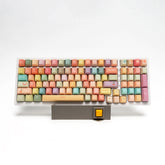
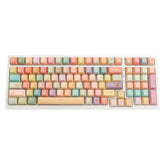
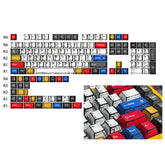
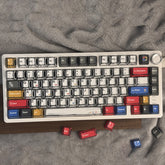
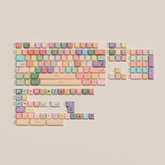
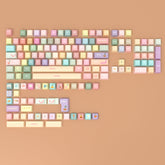


Leave a comment
All blog comments are checked prior to publishing